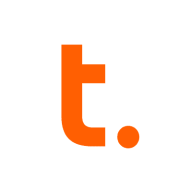

Teradata and Microsoft Azure Synapse Analytics are key players in the data management sector, each offering distinct advantages to meet different business needs. Microsoft Azure Synapse Analytics holds a slight edge due to its seamless integration within the Azure ecosystem, which is appealing for users who demand flexibility and integration with other cloud services.
Features: Teradata is well-regarded for its shared-nothing architecture, which ensures linear scalability and effective parallel processing, making it ideal for handling large-scale, structured data efficiently. Microsoft Azure Synapse Analytics stands out for its flexibility and native integration within Azure services, providing advanced analytics and a user-friendly interface for diverse data processing tasks, including machine learning.
Room for Improvement: Teradata faces challenges with high cost and limited cloud offerings, prompting a need for better performance with unstructured data and improved integration capabilities. Microsoft Azure Synapse Analytics is often critiqued for its complex initial setup, variable pricing, and a need for enhanced data governance and smoother migration processes.
Ease of Deployment and Customer Service: Teradata typically operates in on-premises and private cloud setups, offering stable deployments and well-regarded customer service for responsiveness and expertise. Microsoft Azure Synapse Analytics is leveraged across public and hybrid clouds, showing versatility in deployment, though its support services are sometimes perceived as inconsistent.
Pricing and ROI: Both Teradata and Microsoft Azure Synapse Analytics are premium solutions with significant ROI. Teradata's higher costs may deter smaller enterprises, though its performance justifies the investment for larger-scale needs. Microsoft offers a pay-as-you-go model, attracting those prioritizing cost management and scalability needs, though pricing can be unpredictable.
Some of my customers have indeed seen a return on investment with Microsoft Azure Synapse Analytics as they used it for analytics to drive decision-making, improving their processes or increasing revenue.
At least fifteen to twenty percent of our time has been saved using Teradata, which has positively affected team productivity and business outcomes.
We have realized a return on investment, with a reduction of staff from 27 to eight, and our current return on investment is approximately 14%.
They are slow to respond and not very knowledgeable.
This is an underestimation of the real impact because we use big data also to monitor the network and the customer.
I would rate the support for Microsoft Azure Synapse Analytics as an eight out of ten.
The customer support for Teradata has been great.
Customer support is very good, rated eight out of ten under our essential agreement.
The technical support from Teradata is quite advanced.
Microsoft Azure Synapse Analytics is scalable, offering numerous opportunities for scalability.
For the scalability of Microsoft Azure Synapse Analytics, I would rate it a 10 until you remain in the Azure Cloud scalability framework.
Recovering from such scenarios becomes a bit problematic or time-consuming.
Whenever we need more resources, we can add that in Teradata, and when not needed, we can scale it down as well.
This expansion can occur without incurring downtime or taking systems offline.
Scalability is complex as you need to purchase a license and coordinate with Teradata for additional disk space and CPU.
Performance and stability are absolutely fine because Microsoft Azure Synapse Analytics is a PaaS service.
I find the service stable as I have not encountered many issues.
We have never integrated Microsoft Azure Synapse Analytics with Databricks, but we have mostly pulled data from on-premises systems into Azure Databricks.
I find the stability to be almost a ten out of ten.
The workload management and software maturity provide a reliable system.
Microsoft Azure Synapse Analytics is an excellent product because it includes both SIEM and orchestration capabilities with playbooks.
There is a need for better documentation, particularly for customized tasks with Microsoft Azure Synapse Analytics.
Databricks is a very rich solution, with numerous open sources and capabilities in terms of extract, transform, load, database query, and so forth.
Unlike SQL and Oracle, which have in-built replication capabilities, we don't have similar functionality with Teradata.
The most challenging aspect is finding Teradata resources, so we are focusing on internal training and looking for more Teradata experts.
If the same thing were available in a web interface, that would be really helpful.
The cheapest tier costs about $4,000 to $4,700 a year, while the most expensive tier can reach up to $300,000 a year.
I think the price of Microsoft Azure Synapse Analytics is very expensive, but that's not only for Microsoft Azure Synapse Analytics—it's for the cloud in general.
I find the pricing of Microsoft Azure Synapse Analytics reasonable.
Teradata is much more expensive than SQL, which is well-performed and cheaper.
Initially, it may seem expensive compared to similar cloud databases, however, it offers significant value in performance, stability, and overall output once in use.
We spent roughly $295,000 on setup costs.
One of the most valuable features in Microsoft Azure Synapse Analytics is the ability to write your own ETL code using Azure Data Factory, which is a component within Synapse.
Microsoft Azure Synapse Analytics offers significant visibility, which helps us understand our usage more clearly.
For Microsoft Azure Synapse Analytics, the integration is the most valuable feature, meaning that whatever you need is fast and easy to use.
Teradata's security helps our organization meet compliance requirements such as GDPR and IFRS, and it is particularly essential for revenue contracting or revenue recognition.
The first thing that I appreciate about Teradata is its multi-parallel processing. Whatever queries we execute on Teradata, they are blazingly fast, so it offers really fast connectivity.
The data mover is valuable over the last two years as it allows us to achieve data replication to our disaster recovery systems.
| Product | Market Share (%) |
|---|---|
| Teradata | 8.8% |
| Microsoft Azure Synapse Analytics | 6.5% |
| Other | 84.7% |


| Company Size | Count |
|---|---|
| Small Business | 29 |
| Midsize Enterprise | 18 |
| Large Enterprise | 55 |
| Company Size | Count |
|---|---|
| Small Business | 26 |
| Midsize Enterprise | 12 |
| Large Enterprise | 50 |
Microsoft Azure Synapse Analytics is an end-to-end analytics solution that successfully combines analytical services to merge big data analytics and enterprise data warehouses into a single unified platform. The solution can run intelligent distributed queries among nodes, and provides the ability to query both relational and non-relational data.
Microsoft Azure Synapse Analytics is built with these 4 components:
Microsoft Azure Synapse Analytics Features
Microsoft Azure Synapse Analytics has many valuable key features, including:
Microsoft Azure Synapse Analytics Benefits
Some of the benefits of using Microsoft Azure Synapse Analytics include:
Reviews from Real Users
Below are some reviews and helpful feedback written by Microsoft Azure Synapse Analytics users who are currently using the solution.
PeerSpot user Jael S., who is an Information Architect at Systems Analysis & Design Engineering, comments on her experience using the product, saying that it is “Scalable, intuitive, facilitates compliance and keeps your data secure”. She also says "We also like governance. It looks at what the requirements are for the company to identify the best way to ensure compliance is met when you move to the cloud."
Michel T., CHTO at Timp-iT, mentions that "the features most valuable are the simplicity, how easy it is to create a dashboard from different information systems."
A Senior Teradata Consultant at a tech services company says, "Microsoft provides both the platform and the data center, so you don't have to look for a cloud vendor. It saves you from having to deal with two vendors for the same task."
Teradata is a powerful tool for handling substantial data volumes with its parallel processing architecture, supporting both cloud and on-premise environments efficiently. It offers impressive capabilities for fast query processing, data integration, and real-time reporting, making it suitable for diverse industrial applications.
Known for its robust parallel processing capabilities, Teradata effectively manages large datasets and provides adaptable deployment across cloud and on-premise setups. It enhances performance and scalability with features like advanced query tuning, workload management, and strong security. Users appreciate its ease of use and automation features which support real-time data reporting. The optimizer and intelligent partitioning help improve query speed and efficiency, while multi-temperature data management optimizes data handling.
What are the key features of Teradata?In the finance, retail, and government sectors, Teradata is employed for data warehousing, business intelligence, and analytical processing. It handles vast datasets for activities like customer behavior modeling and enterprise data integration. Supporting efficient reporting and analytics, Teradata enhances data storage and processing, whether deployed on-premise or on cloud platforms.
We monitor all Cloud Data Warehouse reviews to prevent fraudulent reviews and keep review quality high. We do not post reviews by company employees or direct competitors. We validate each review for authenticity via cross-reference with LinkedIn, and personal follow-up with the reviewer when necessary.